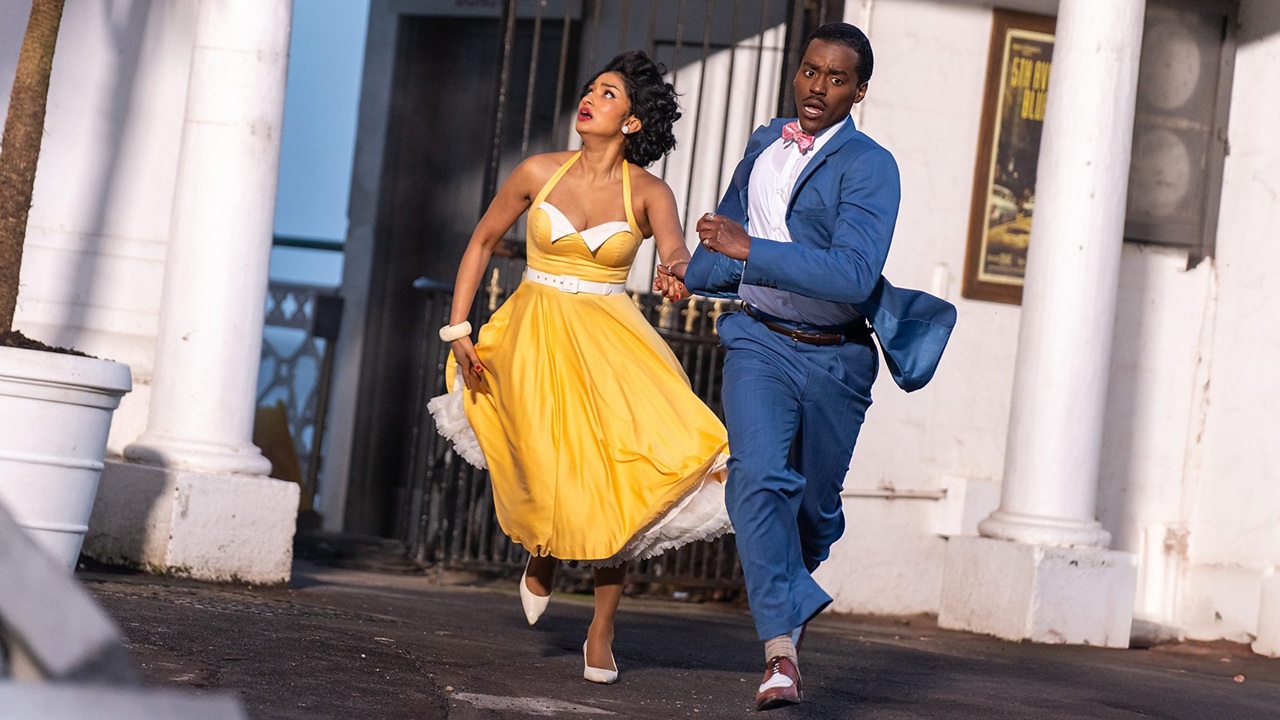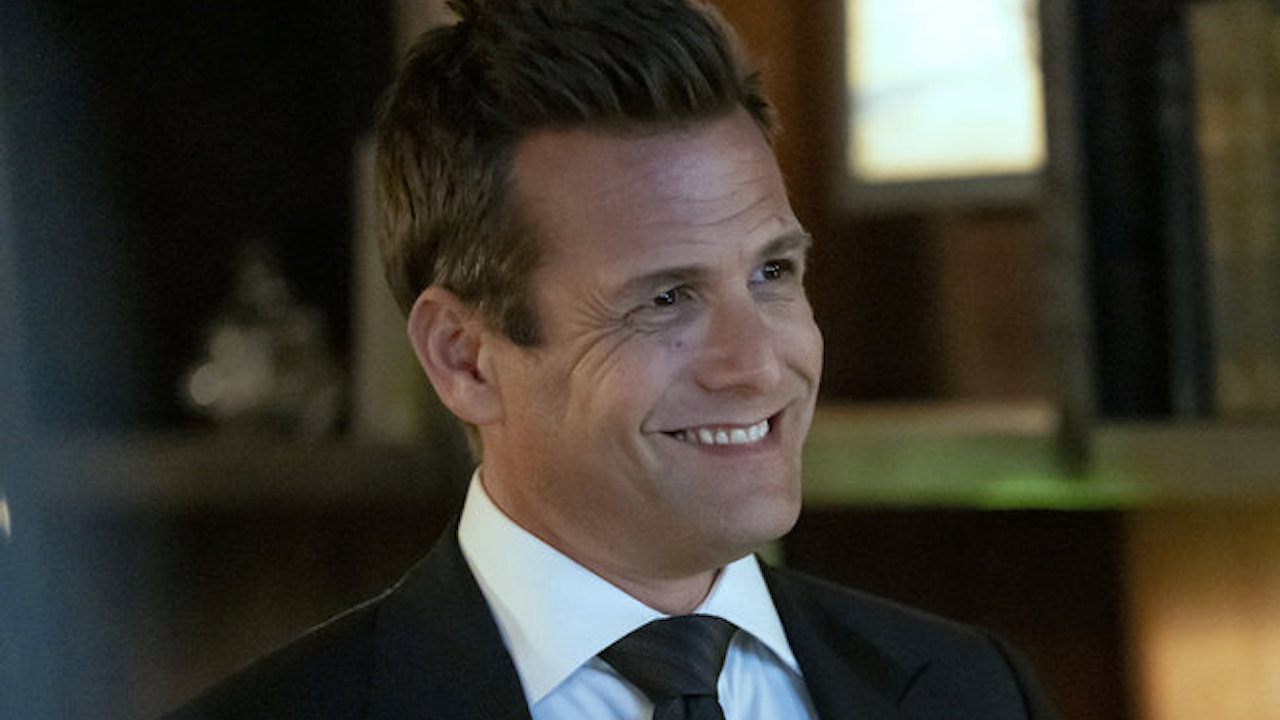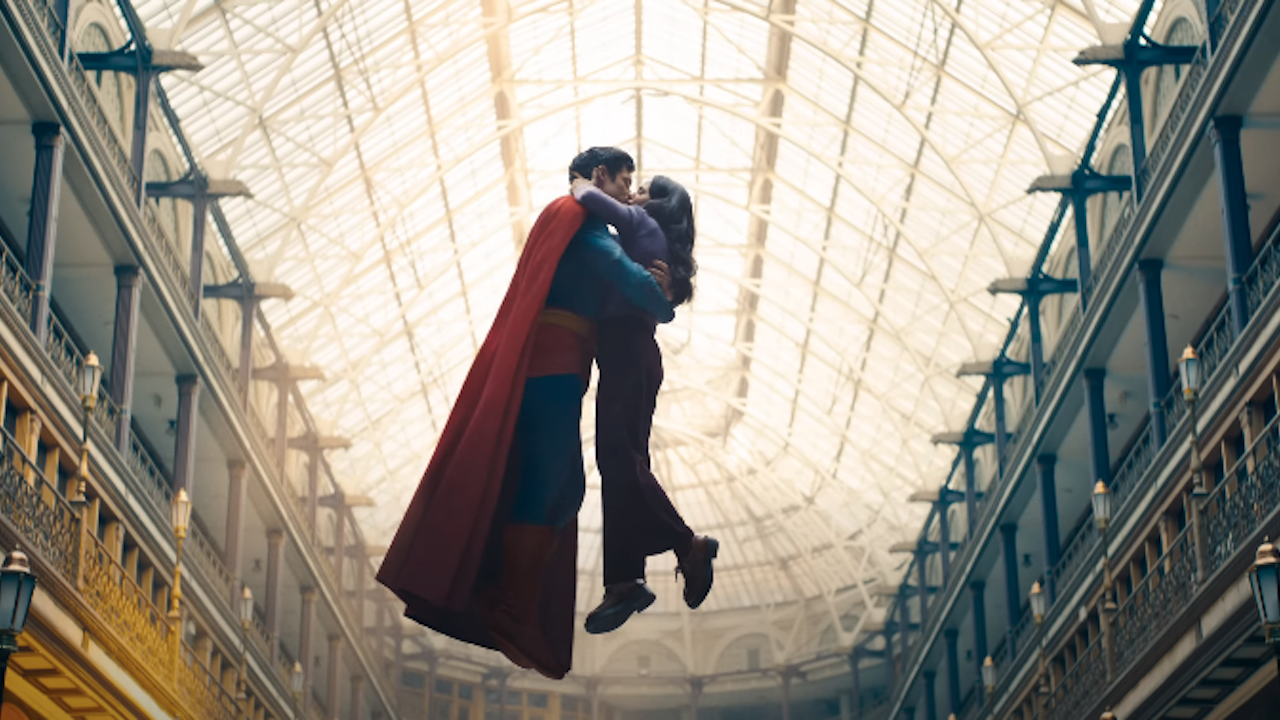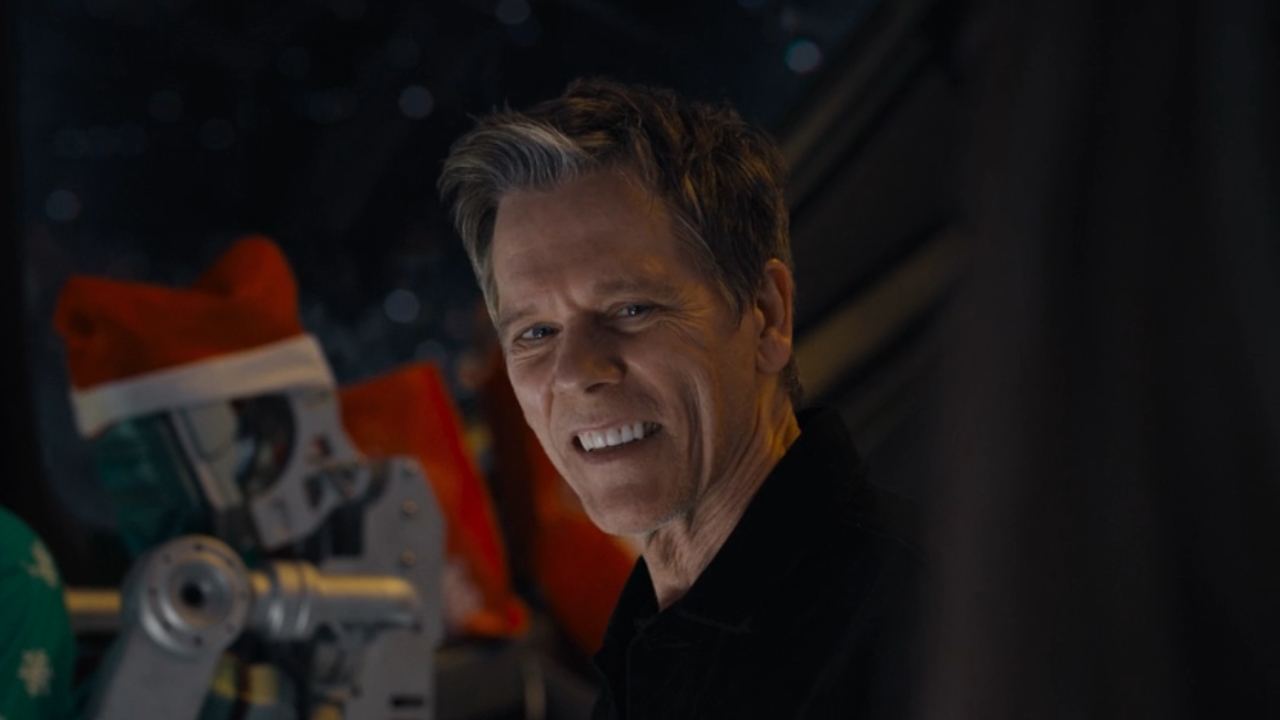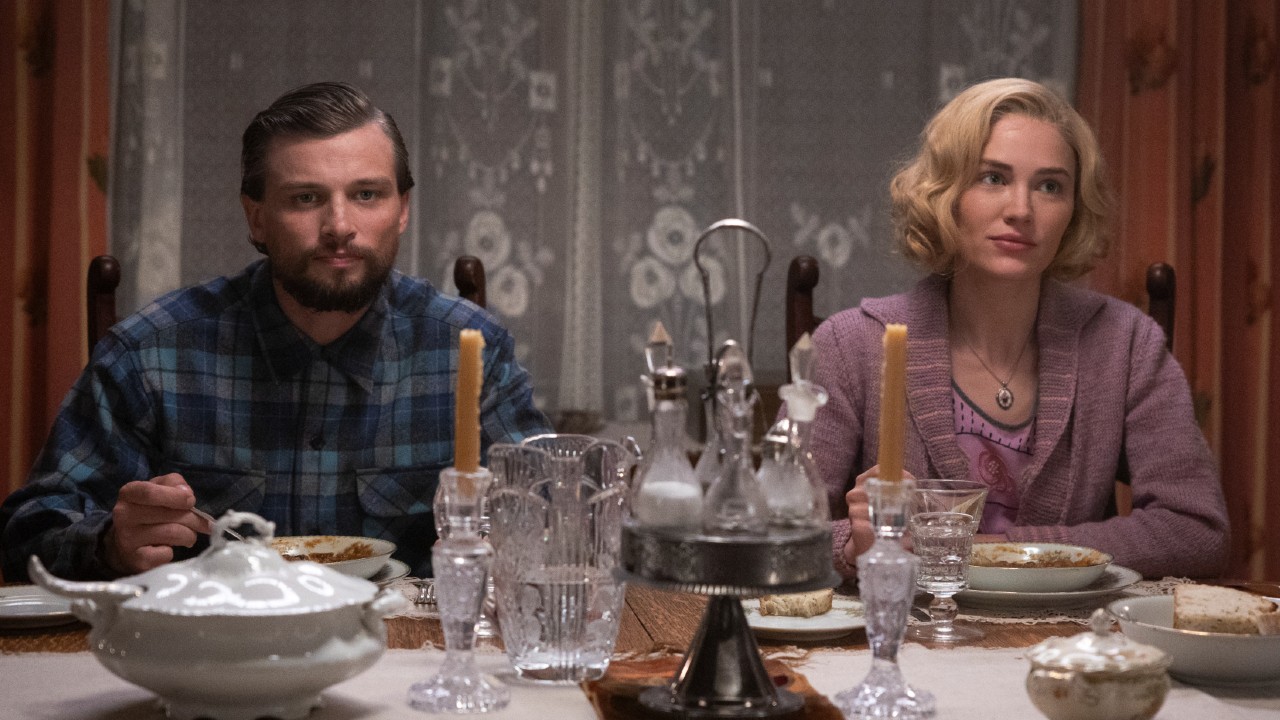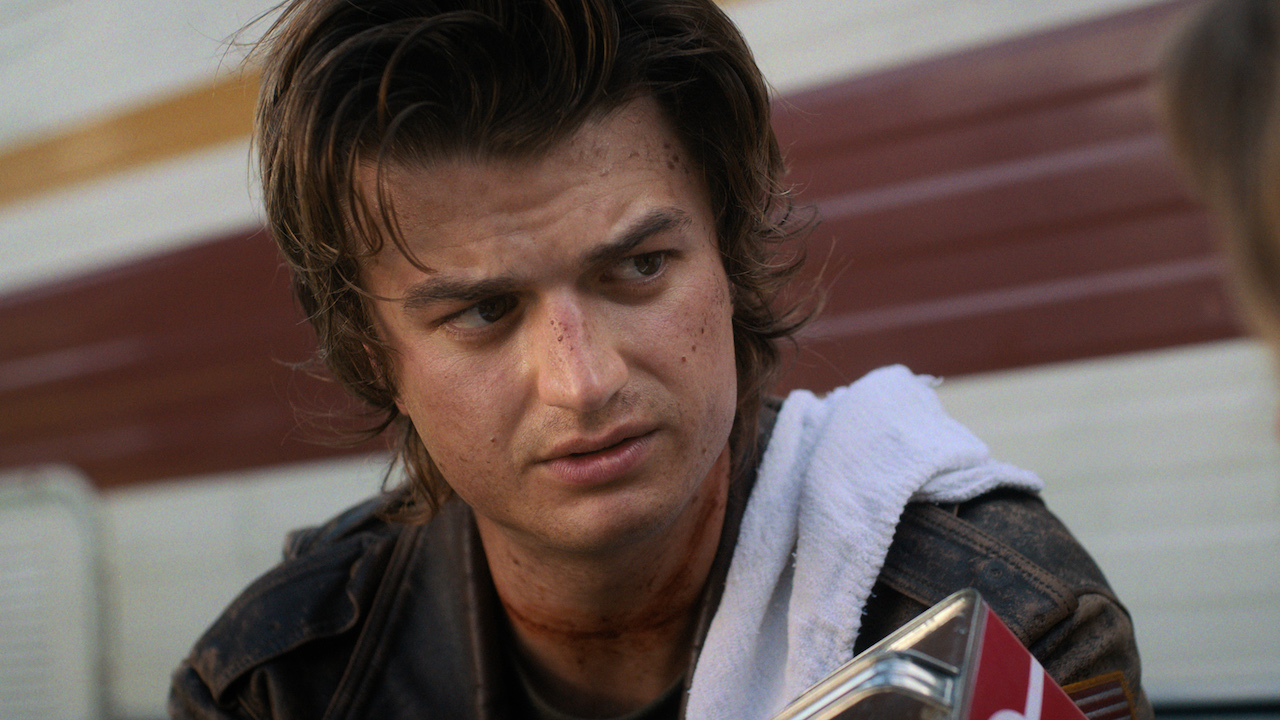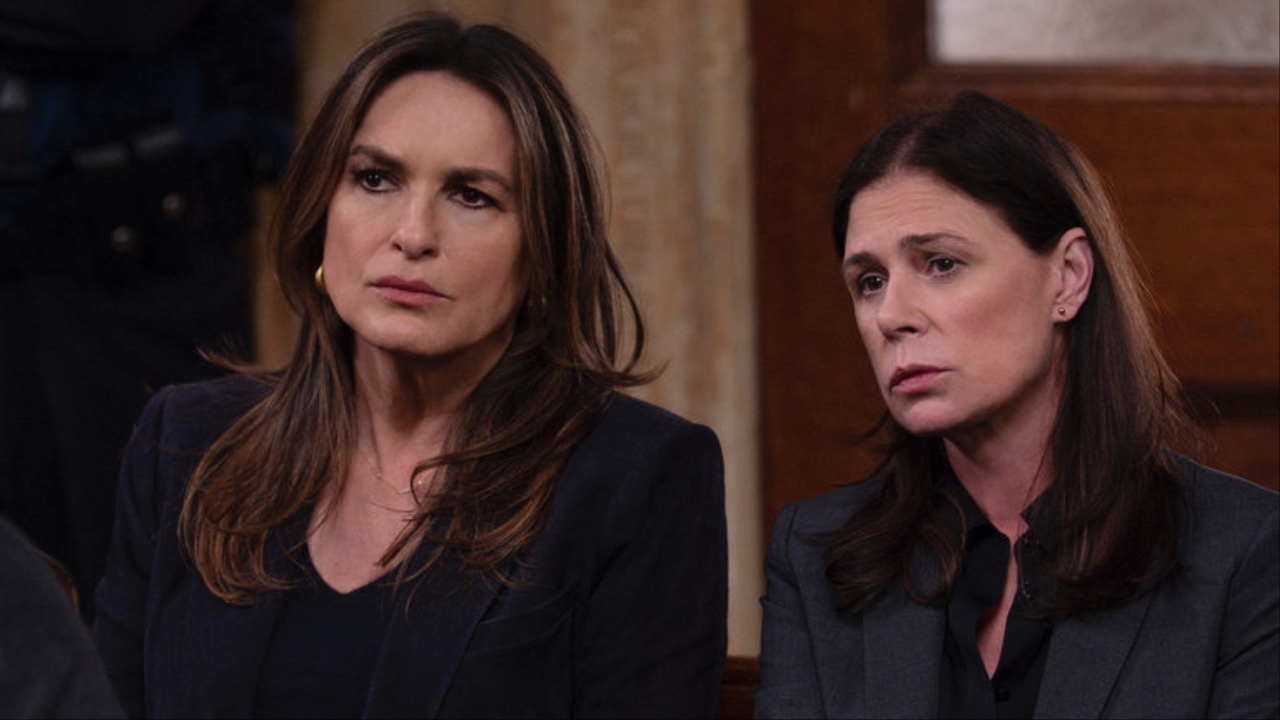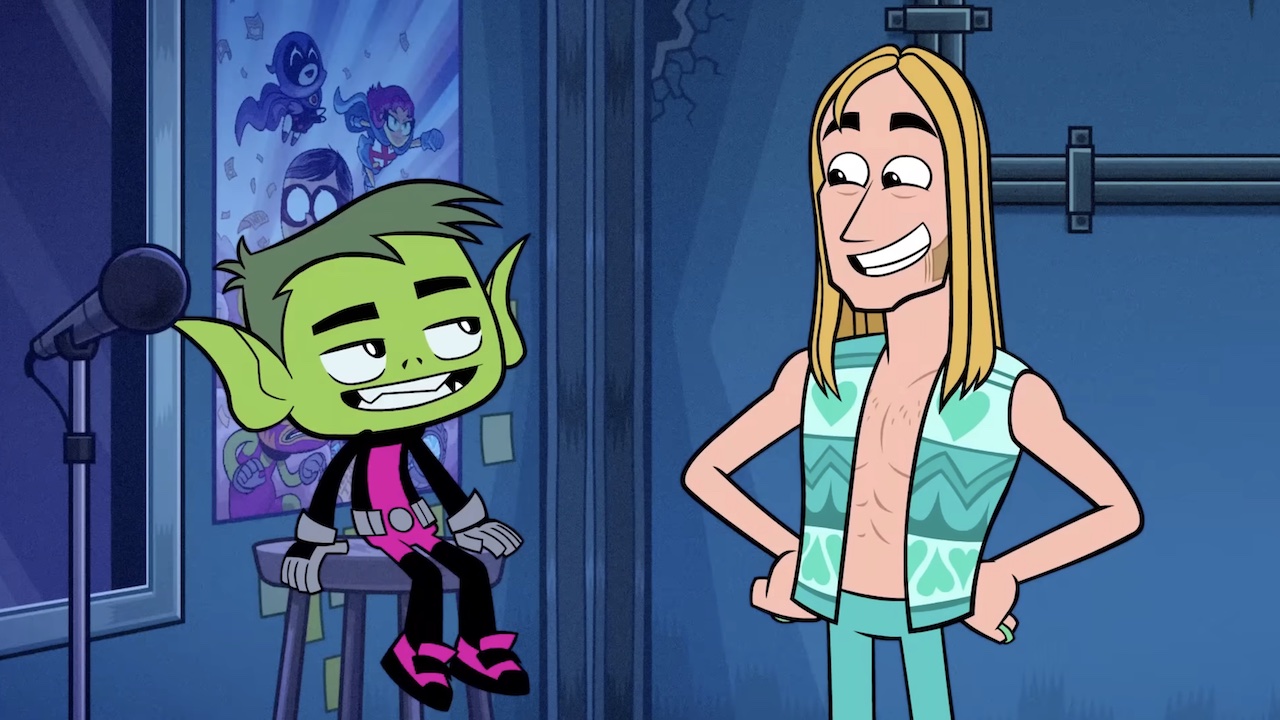
'Tis the season for scaring yourself silly, not only with horror offerings like Paranormal Activity 4 and Sinister in theaters, but with Halloween being a perfect excuse to dust off old favorite scary movies. But when you're marathoning the entire Halloween series, or just picking and choosing from among your horror favorites, you sometimes can't help but notice some annoying trends. Wait, that person is going into the creepy scary basement again? And, hang on-- why can't they just get the hell out of there and away from the monster?
Like any genre, horror has its tropes and cliches that it returns to over and over again, but there are ways to do it right and ways to drive you crazy. Below we get into 11 horror cliches that can be great when done right, and really really irritating when done badly. Not only do we pick the good and bad examples of the cliche, but we give some advice on how to spot it when a movie is actually using it right. check out our picks below, and chime in with a comment letting us know what other horror cliches drive you nuts.
SPOILER WARNING: We'll be discussing the endings of a few horror movies, though none especially recent (and if they're especially recent, they're probably not that good). So fair warning.
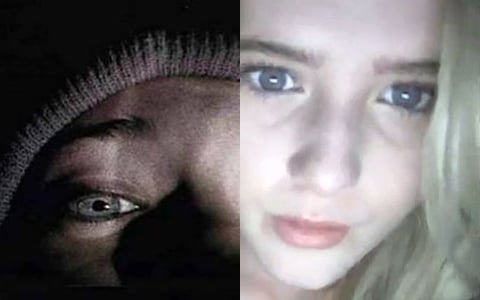
Found Footage Horror
THE GOOD: Starring unknown actors playing a doomed trio of film students traversing into the woods rumored to be haunted by the Blair Witch, The Blair Witch Project was the found footage feature that started it all. Part of what made the film impactful was its mystique that included internet rumors it was all true, but what's made it a contemporary classic is how their cameras—which go from a documentary tool to a coping mechanism as the mayhem mounts—bind us to their experience from the start of their trek to the film's final harrowing moments. Co-directors Daniel Myrick and Eduardo Sánchez trusted that the raw performance and shooting style was evocative enough that they didn't need much gore or special effects to terrorize audiences, and so started a trend that is still drawing crowds.
THE BAD: Where the first three Paranormal Activity movies played to the strengths of this genre, from a contained narrative to extended tension building and a tremendously terrifying finale, the latest addition to the franchise traded in the slow-burn scares for a string of jump scares, making for an entry that was fun, but barely frightening. But worse than its jaunty tone was Paranormal Activity 4's lazy screenwriting that offered thinly sketched—and sometimes pointless—characters along with a recurring lack of justification for its heroine—a terrified teen girl—to endlessly be recording what's going on around her. Sure, it's good for cheap thrills, but its scares won't linger like the image of Mike in that corner…
WHAT WE'VE LEARNED: With the genre already promising audiences that all involved in the plot will die—or be otherwise destroyed—the found footage genre demands excellent character work that will invest us in its protagonists and root against the inevitable. Also key is justifying the found footage device through the entire film, lest viewers write them off as stupid and thereby somehow deserving of their fates. Failing that, the narrative should at least be fast pace enough that the audience has no time to wonder why this character fleeing in mortal terror is still carrying a camera.
CINEMABLEND NEWSLETTER
Your Daily Blend of Entertainment News
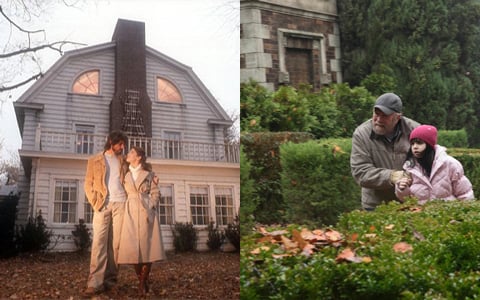
The "Someone Died Here" Setup
THE GOOD: The Amityville Horror traces its roots back to 112 Ocean Avenue. The property played host to the real life murder spree of Ronald DeFeo Jr., and that’s not even the only cursed factor supposedly infesting residents with miserable karma. The house was built right over the top of an Indian burial ground, and devil worshipers even resided at the location. A long line of sordid and sketchy behavior predates the Lutz family’s move at the start of Amityville Horror, and these exhaustive details are very carefully unfurled throughout the film’s runtime. The fact that someone died at 112 Ocean Avenue matters. It’s the whole reason there’s a movie.
THE BAD: Don’t Be Afraid Of The Dark essentially operates as a creatures vs humans horror movie. It lets the creatures reside inside a fireplace in the old, sealed off basement, and it lets the family be immersed in their own worlds enough to allow for plenty of alone time. As a back-and-forth, this angle is marginally successful. Unfortunately, that’s not the only angle the film takes. It also gives us the backstory to the house, which involves Lord Blackwood distraught over his son’s disappearance. When the mood strikes them, a little research is done by the main characters to find out what happened before, but mostly, it’s a half-hearted timekiller to try and explain the presence of the creatures, which don’t really need to be explained.
WHAT WE'VE LEARNED: Finding out someone died inside a house is always creepy. It’s a great horror movie angle to take, but if a film is going to go there, it can’t just be an afterthought. Amityville Horror works because everything relates back to the house’s past. Don’t Be Afraid Of The Dark doesn’t because it could have easily let its monsters go unexplained.
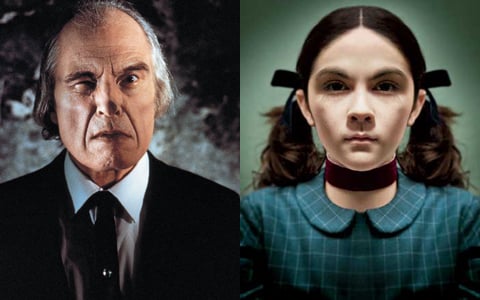
The Mirror Scare
THE GOOD: When it comes to this classic, though overused, horror trope, it's hard to find a better positive example of its use than in Don Coscarelli's 1979 cult classic Phantasm. Featured in the very last scene of the movie, as Mike (A. Michael Baldwin) enters his room thinking that his experience with the Tall Man (Angus Scrimm) was all a dream, he is startled when he closes his bedroom closet door only to see the villain's visage in the mirror. After a moment of total shock, the Tall Man growls "Boy!" and an alien dwarf pulls the protagonist through the mirror, presumably to die.
THE BAD: While the mirror scare can be an effective tool, what ruins it is when filmmakers use it to just send a quick jolt up the audience's spine. A perfect instance of this cheap version can be found in Jaume Collet-Serra's 2009 movie Orphan. Like many of the worst examples of the cliche, it begins with a woman (in this case Vera Farmiga) looking at into her bathroom cabinet's mirror. Upon closing the door, suddenly her loved one (in this case Peter Sarsgaard) appears over her shoulder, only to apologize for scaring her (perhaps they should be apologizing to us for using such a cut-rate gag).
WHAT WE'VE LEARNED: A proper mirror scare needs commitment on the part of the story and the direction - a slow build and a great set up can lead to wonderful results.
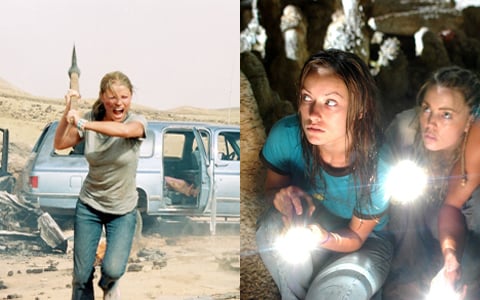
No Cell Phone Signal
THE GOOD: The ‘No Signal’ cliché was one created very recently when writers realized that cell phones could be used to solve a lot of horror movie conflicts, but just because it’s new doesn’t mean that it doesn’t have its positive and negative examples. For example, Alexandre Aja’s remake of The Hills Have Eyes capitalized on the fact that the main cast was isolated in the middle of the desert where it would naturally be hard to find a wireless connection. It also gave us the clever and relatable line, “97% nationwide coverage and we find ourselves in that 3%.”
THE BAD: In some movies mentioning the fact that the characters can’t get any cell phone service can fill a lot of plot holes, but if you’re making a movie that doesn’t really need you to explain that the characters can’t use their mobiles then don’t explain it! Case in point: John Stockwell’s Turistas. Despite being released in 2006 and taking place entirely in Brazil, one of the actresses in the movie still asks her friends if any of them are getting any signal on their phones. Wouldn’t it just be easier to say that none of them have global phones? It avoids the trope and takes advantage of the movie’s story elements.
WHAT WE'VE LEARNED: ‘No Signal’ is going to be around so long as people continue using cell phones, which is another way of saying forever. We at least ask that it only be used where 100% necessary.
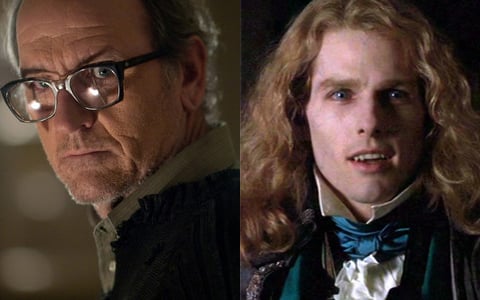
The Killer's In The Backseat
THE GOOD: The ‘high beams’ urban legend (also featured in the film of the same name) is an oral tradition probably as old as the automobile and even though the horror trope has been endlessly adopted in by movies, Matt Reeves Let Me In is a recent example that proves the cliché isn’t completely dead. And don’t think that because it’s a remake that Reeves is simply cribbing from the original; the sequence reinvents the tired setup by placing us with the killer (Richard Jenkins's character) and opting for suspense over a jump scare, and it's completely Reeves's invention. Exciting, tense and eventually explosive, Reeves manages to milk it so the audience somehow feels worried for both predator and prey.
THE BAD:A far less successful use of the backseat killer [SPOILER ALERT] occurs at the very end of Neil Jordan’s Interview with the Vampire. The scene tries to pull off a simple jump scare, not to mention squeeze in the well worn ‘he’s not dead?’ horror convention, but fails miserably as the playful music betrays the moment and it also offers another chance to groan at Tom Cruise’s woefully miscast Lestat. It’s laughable not scary. The supernatural aspect of his character also hurts the scare’s effectiveness since the killer in the backseat is terrifying precisely because it’s a realistic scenario, hence urban legend, that transforms the familiar, even comfortable spot of the family sedan (that’s where the kids sit!) into a dark place of unexpected terror.
WHAT WE'VE LEARNED: As a myth that's become a cliche, the killer in the backseat has to be used in an inventive way these days-- and if you're going to try to scare us, at least make it feel like this could really happen to us.
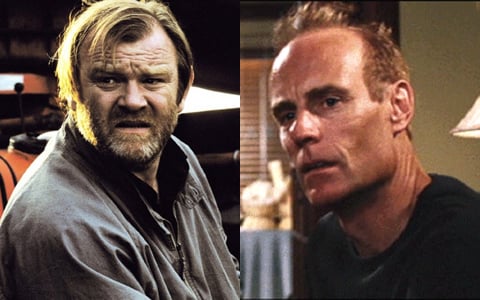
Killing A Loved One Infected By A Zombie
THE GOOD: Unlike the slasher movie, where your loved ones brutally die one by one and only once, a major part of monster stories is the notion that one can be turned. Most of the time with vampires, werewolves and/or zombies all it takes is a transfer of fluids to get the clock ticking and this offers two dramatic moments; the infection and the kill, the second only more tragic when performed by a loved one. Danny Boyle’s 28 Days Later features one of the best examples of the commonplace scenario, as writer Alex Garland wraps both moments into one extended and harrowing sequence. And since we care deeply about Brendan Gleeson’s father character, it makes his violent outburst to protect the others extremely emotional. Jim is saved having to do the deed thanks to the army, but the bat was raised and ready.
THE BAD: The "forced to kill your zombie loved one" set-up is inherently dramatic. Well, that’s as long as the audience is invested in the relationship in question, otherwise it’s just a missed opportunity or more zombie killing fun. Zack Snyder’s Dawn of the Dead is an enjoyable rehash of George Romero’s classic but it isn’t able to capitalize on the emotional moments. Similar to 28 Days Later, there is an infected father and a healthy daughter (and oddly both dads are named Frank), but because of the limited amount of time we spent with them, and the cringey dialogue, it’s hard to care. In fact, she’s so annoying I was kind of hoping they’d kill them both. I felt more for the Andy the sign guy than I did for the father-daughter because, there was no reason to be emotionally invested in the loved ones.
WHAT WE'VE LEARNED: Just like when any regular human character dies onscreen, we have to care about the zombie who gets dispatched as well as the relative left doing the killing.
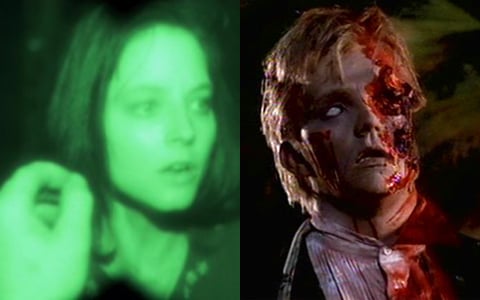
The Basement = Bad
THE GOOD: “Hey daddy-o! I don’t wanna go, down to the basement. There’s somethin’ down there. I don’t wanna go!”
That’s The Ramones singing about the horrors of the basement on their 1976 debut album, capturing the simplicity of one of the oldest clichés in the horror genre. Why is it that the dark, dank basement terrifies us so? Perhaps its because in the sublair of any normal-looking abode, psychopaths can hide any number of torturous devices away from a stranger’s wandering eye, as “Buffalo” Bill did in Jonathan Demme’s terrifying 1991 film, The Silence of the Lambs. Sure, everyone remembers Lecter taunting Clarice from his jail cell. But the confrontation – seen through Bill’s night-vision goggles – brought chills because of all the dangers lurking outside of our view as the FBI agent went down into his basement lair.
THE BAD: Silence of the Lambs's lair far better than the cheeky conclusion to Fred Dekker’s otherwise enjoyable Night of the Creeps. Pitting a college geek (Jason Lively) and a grizzled detective (Tom Atkins) against brain-burrowing slugs from outer space, the finale finds the slugs heading into the basement of a sorority house, where – wait for it – the ladies were harvesting specimen brains for a science experiment. Yeah, right. The cheesy ending doesn’t totally derail Creeps, which is such an enjoyable ride, but the cliché kind of takes a little wind out of the movie’s billowing sails.
WHAT WE'VE LEARNED: We're all scared of the basement anyway, so you don't have to do much to jazz up this already terrifying place. Just make whatever's down there believable and we'll all be jumping in our seats.
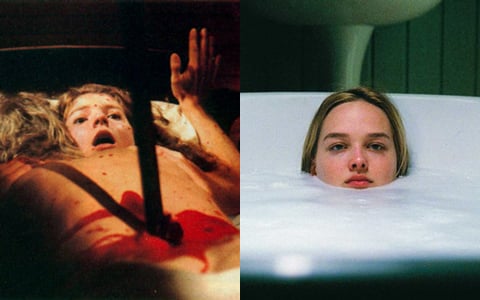
Sex = Death
THE GOOD: It’s inevitable: Fuck in a horror flick, and you’re bound to die. The best horror franchises finds ways to have fun with their deadly, clichéd sex. And few horror franchises have created more clever sex-related kills than the Friday the 13th series. Trying to pick one great example from the ongoing Friday series proved pretty difficult. Ultimately, I had to go with the scene in Friday the 13th Part II where Jason sneaks into a bedroom while a couple are having sex and impales them at the point of orgasm, breaching both of their bodies, the mattress and the floor. Yes, it’s stolen from 1971’s Bay of Blood, but it puts the exclamation point on the “Have Sex and Die” cliché that horror has embraced, and has to be included.
THE BAD: This might be the most gratuitous example of sex and death in the horror genre. Ladies and gentlemen, I introduce Teeth, Mitchell Lichtenstein’s horror comedy about a teenage girl suffering from “vagina dentate.” Yes, she literally has razor-sharp teeth in her vagina, meaning any man who dares to rape or fornicate with her has his penis chomped off. And sometimes, her dog chews up the remains. Few of these men die from the vagina bites, though their pride and manhood certainly is dead and buried as a result, and that’s close enough for me.
WHAT WE'VE LEARNED: There's a reason the French call the orgasm "the little death." We all know that sex and death have an odd relationship, so you'd better follow through with the death part-- and the more over-the-top, the better-- if you're going to use this familiar trope.
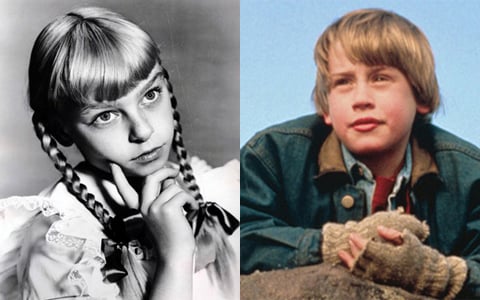
Killer Kids
THE GOOD: From her darling dual braids to her frilly dress and metal-tipped tap shoes, The Bad Seed's Rhoda Penmark seems the perfect little girl, which makes her sinister secret of serial kills all the more frightening. Only her mother knows what lies behind Rhoda's smile, and by keeping the violence off camera—focusing instead on Mrs. Penmark's hair-raisingly horrified reactions—director Mervyn LeRoy made a creepy kid so scary that it necessitated an ending that deviated from the play that inspired it. Not only would Rhoda have to be killed, but to calm audiences' fears, the filmmakers included a fourth wall shattering curtain call, complete with the tiny terrorizer getting punished…via spanking.
THE BAD: A blatant Bad Seed rip-off, 1993's The Good Son stars post-Home Alone Macaulay Culkin as a murderous blond boy, but the results are actually laughable. For one, the leap from Kevin McCallister, who gleefully assaults bumbling thieves with traps that could easily kill them, to the blandly named Henry Evans, who share Kevin's smug smile and penchant for violence albeit more intentionally malicious, doesn't prove all that jarring. And with his main adversary being his goody-goody cousin instead of a mother torn between morality and love of her child, the stakes are ridiculously lower and the performances infinitely less impressive. By the time he's finally dropped off a cliff, who cares?
WHAT WE'VE LEARNED: The scariest aspect of killer kid movies is that their murderous menace can easily hide behind a veneer of assumed innocence. More than any other horror trope, it's poignant performances from the cast that makes all the difference here. No matter how much gore or onscreen violence you offer, what makes these kids the most haunting is the reactions of their devastated—or terrified—loved ones.
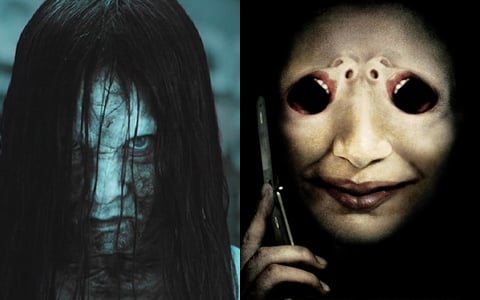
Possessed Technology
THE GOOD: When the Japanese film Ringu came out in 1998 the DVD was just emerging as the home-video format of choice, and by the time the American remake The Ring came out in 2002, VHS was definitely on the decline. But that anachronistic technology is part of what makes The Ring one of the most effective horror films of the last 10 years, and one of the few examples of a way that possessed technology can actually work. Everyone's susceptible to a good urban legend and proving to themselves that a curse isn't real, which is why that VHS tape travels so well-- and why all of us, secretly, worries we might be the next to receive it. I don't even have a VCR and I worry about this.
THE BAD: Unlike the VHS tape of The Ring, the cell phones of One Missed Call don't have any rumors around them-- they're just technology that, for ghostly reasons, has the power to kill you. I realize we're all addicted to our cell phones, but the curse of the cell phone ought to be pretty easy to escape-- turn the damn thing off, find a remote area with no cell service that seems to pop up in all the other horror movies, and go about your day. Not only does One Missed Call ask us to believe that cell phones have the power to kill us through something other than brain cancer, it ties the whole story into ghost girls way too similar to The Ring-- a cliche on top of yet another cliche.
WHAT WE'VE LEARNED: If you're going to try to make us fear the technology that makes our lives better, you should have a damn good reason-- and a good horror movie to go along with a trope that almost never, ever works.
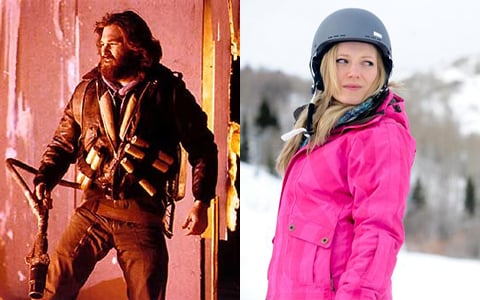
"We Can't Leave"
THE GOOD: I have to imagine that since 1982, few people have traveled to Antarctica, or any desolate snow-bound location, without thinking of The Thing. John Carpenter's horror masterpiece assembles its characters in the most remote place on the planet, then carefully twists the knobs of logic until they're trapped, with no contact from the outside world, on a base that's being slowly taken over by a shape-shifting monster. It's completely clear why the group can't leave their arctic base, which makes the power of the monster-- and the way the group starts turning on each other as a result-- that much greater.
THE BAD: But for every movie like The Thing where characters are trapped with a monster for good reason, there are a dozen more that strain way too hard to make it happen, and one of the worst modern examples is Frozen. My friend who once worked operating ski lifts swears that nobody ever, ever gets stuck on a lift, much less without plenty of employees left to notice they're still up there. And why can't one of our three heroes just jump down and risk a broken bone to find help? Well, wolves, of course! (Everybody knows they roam America's ski resorts after dark) Frozen strains so hard in its setup that when the legitimate scares come, we're way too focused on the logical leaps to go along with it.
WHAT WE'VE LEARNED: The less time characters in a movie spend time explaining why they can't get away, the better. Put them in a situation we can all understand-- outer space, Antarctica, under the sea, whatever-- and let the scares happen naturally, without ever stopping to explain why they can't get the hell out of there.
